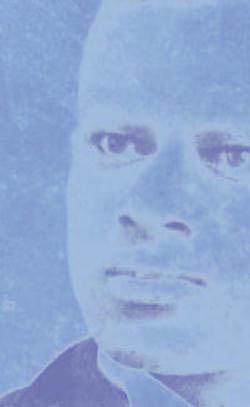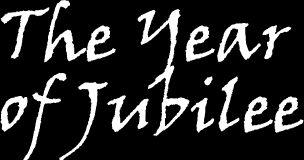
a book about Harrisburg...
by George F. Nagle
Study Areas:
Stories from The Year of Jubilee
Scipio
Run away, some months ago, from Capt. Thomas
Prather, of Prince George's county, Maryland, a Negroe man, named Scipio,
is of short stature, plays on the Banjo, and can sing. It is said that
the said Negroe was, about two months ago, at Mr. Harris's, on Susquehannah,
and wanted to come to Philadelphia to his master, that he had a pass
with him, and pretended to be a free man. Whoever takes up said slave,
and brings him to Mr. George Croghan, or Mr. George Gibson, in Lancaster,
or to Marcus Kuhl, in Philadelphia, shall have Three Pounds reward, and
reasonable charges, paid by George Croghan, George Gibson, Marcus Kuhl.
(The Pennsylvania Gazette, 13 July 1749)
The advertisement above is important to the history of Harrisburg, Pennsylvania because it documents the passage of an escaped slave through this area nearly a century before the proliferation of such freedom seekers caused the South to push for passage of the Fugitive Slave Law. Scipio was not the first freedom seeker to reach Harrisburg, then known as Harris' Ferry, in his quest for freedom, and in subsequent decades he would be followed by dozens, then hundreds, and finally by thousands more.
It also illustrates some interesting points about the escaped slaves who arrived in this area at that time. There were, it appears, numerous men who claimed Scipio as their property. At the time of his escape, he was with Captain Thomas Prather, a Frederick County, Maryland jurist. However the reward for his capture was offered by three other persons: George Croghan, George Gibson and Marcus Kuhl.
Croghan was the famed British Indian Agent and fur trader who had established a trading post at Silver Spring, Cumberland County, along the Great Road that led from Harris' Ferry to the west. He competed fiercely in the Ohio region with French traders, and helped foster a strong British influence among Native American tribes in this area and territories to the west. It is not clear what property rights Croghan exercised over Scipio, but he was known to have enslaved people in Ohio and at his substantial trading plantation on the Conodoguinet Creek at Silver Spring.
At the time of Scipio's escape from Captain Prather, Croghan was in Lancaster, Pennsylvania, a city he visited frequently to check on his trading stock and to help negotiate peace treaties with Native American tribes. His associate in Lancaster was fellow trader George Gibson, whose early tavern at Hickory Town became the central point around which the town of Lancaster was laid out.
Although Croghan and Gibson were both frontier traders, neither man was involved in the slave trade. So what was their relationship to the escaped man Scipio? Scipio may have been one of those slaves laboring on Croghan's Conodoguinet plantation, but it is more likely he had no relationship with Croghan. Croghan and Gibson may have been nothing more than agents for Philadelphia baker Marcus Kuhl, who actually claimed Scipio as his own.
According to the advertisement, Scipio was believed to be attempting to return to Philadelphia and Kuhl, when he ran away from Captain Prather in Maryland. Kulh was an immigrant of German or Swiss heritage who was naturalized about 1730. He began a bakery in Philadelphia that he operated with the help of several white servants and Black slaves, several of which regularly ran away. Whether Marcus Kuhl was leasing Scipio's service to Captain Prather, or the slave was with the Maryland jurist for other reasons is not known. Regardless of circumstances, Scipio escaped from Prather, in Prince George's County, and ended up at Harris' Ferry in the spring of 1749, a distance of well over one hundred miles.
Was Scipio, who "pretended to be a free man," really attempting to return to bondage in Philadelphia, as noted in the advertisement? Several clues indicate he was not. The route from Prince George's County to Harris' Ferry is on a direct line north, whereas Philadelphia was almost an equal distance to the northeast. He would have passed through numerous locations along the way, including Baltimore and York, in which he would have found clear directions toward Philadelphia, yet he continued north, into the back country. In addition, the roads to Harris' Ferry from Prince George's were far less developed and hospitable than those to Philadelphia. Why would he have chosen to follow the rough and dangerous roads on a route that was clearly out of his way?
Scipio was reunited with Marcus Kuhl shortly after the advertisement was placed in the Pennsylvania Gazette. However, this reunion was not a happy one. Baker Kuhl placed the following advertisement in the Gazette: "Run away three weeks ago, from Marcus Kuhl, of Philadelphia, baker, a Negro man, named Scipio, wears a blue broad cloth coat, or a black ditto, old shoes, and stockings, of a short stature, plays on the banjo, and sings with it." It appears that the story he told to those who saw him at Harris' Ferry was a cover. He did not really want to "come to Philadelphia with his master," as Scipio, by his reckoning, was actually his own master. Within a few short months the man who "pretended to be a free man" was again on the road, banjo in hand, seeking freedom.
(This story is a supplement to The Year of Jubilee, Volume One: Men of God, page 46).


